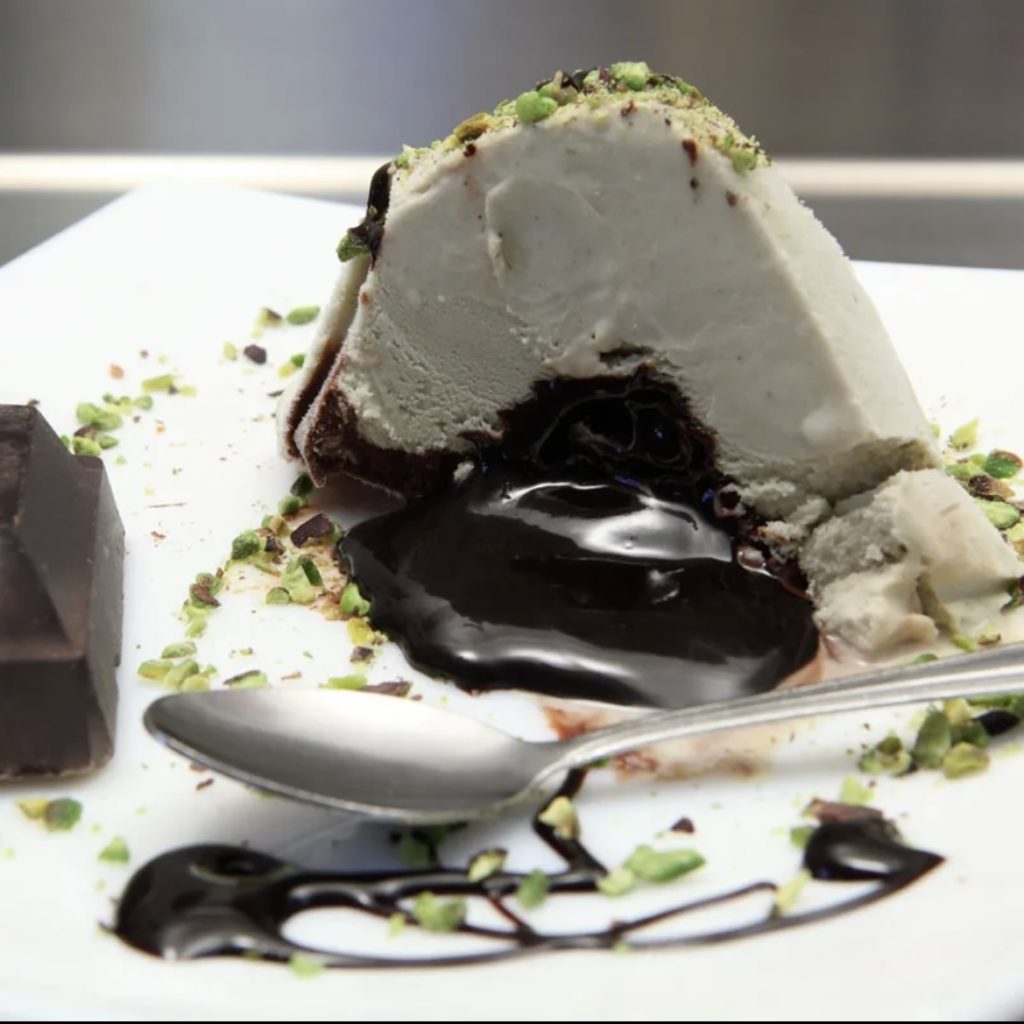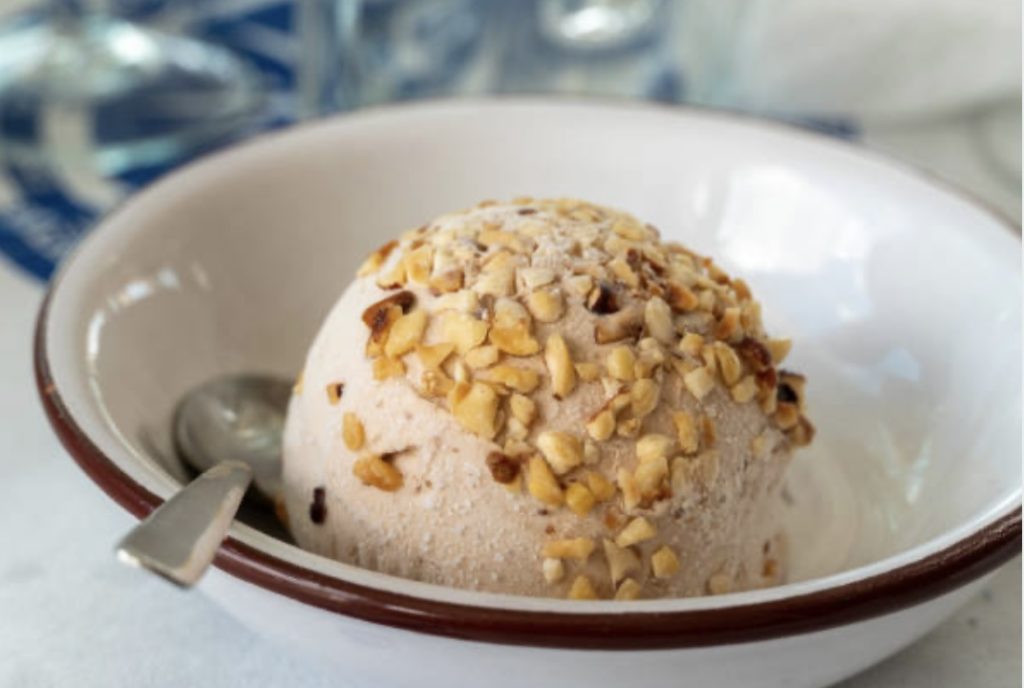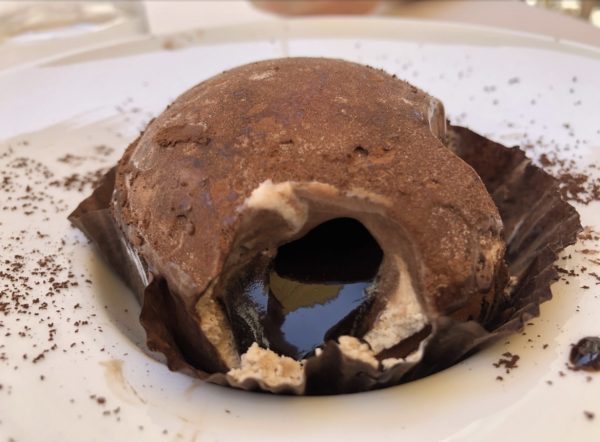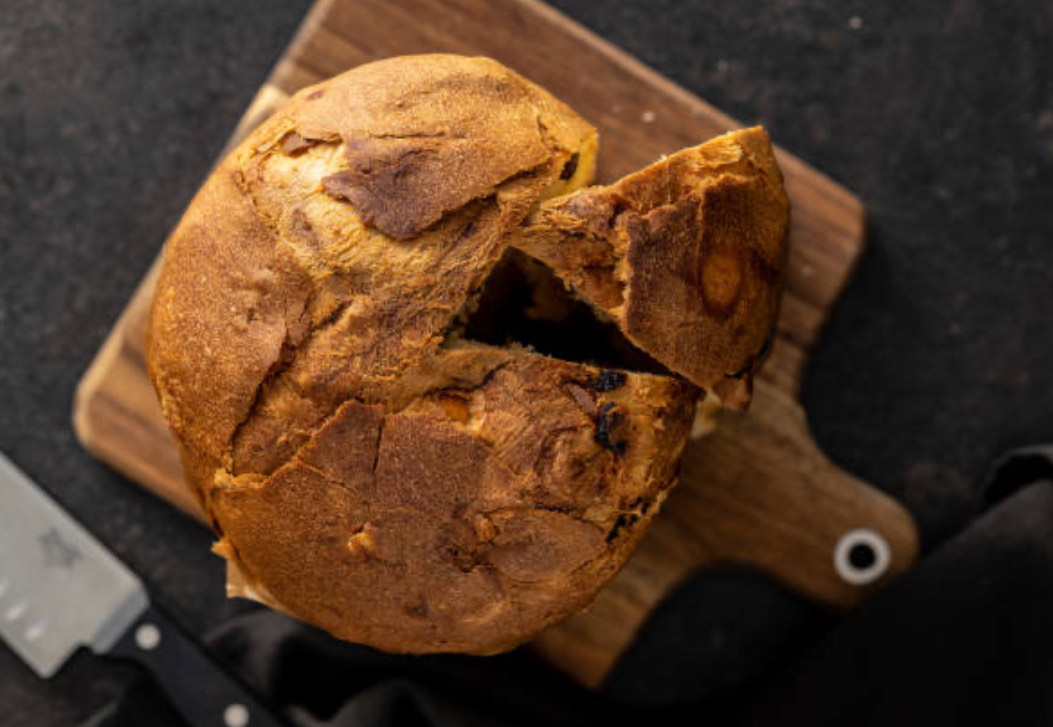Have you ever heard of, or better yet tasted, Tartufo di Pizzo?
Tartufo di Pizzo as its name suggests, hails from the Calabrese city of Pizzo – a small fishing town on the region’s west coast. It is also affectionately referred to as the “city of ice-cream” because of this very particular confection, which was the first gelato in Europe to receive an IGP designation (protected geographical indication).
For those who may be unfamiliar with tartufo, it is an Italian, frozen dessert that takes the form of a ball. It is composed of two or more flavors of gelato, with a heart of melted chocolate (as per the original recipe) or alternatively, with either fruit syrup, liquirizia (licorice syrup, also a famed gastronomic treasure of Calabria) or frozen fruit (strawberry, raspberry, or cherry) in the center. It is then enrobed in a shell made of chocolate or cocoa; and sometimes cinnamon or chopped nuts are used.
Its name, tartufo, translates to truffle because of its resemblance to the coveted mushroom. Thankfully the only digging here is done with a spoon when enjoying this luxurious dessert.

While gelato has existed in Italy since the 19th century, Pizzo’s place at the centre of the gelato universe is thanks to the invention of the tartufo in the 1950s; the tartufo put Pizzo on the culinary map. It is important to note that this town in the Province of Vibo Valentia, has historically been a gathering place for pastry chefs from Calabria, Campania (predominantly Naples) and Sicily to gather and exchange knowledge and expertise on their craft. It was therefore already recognized as a “sweet” centre of pastry production and the tartufo became its crowning glory.
So how did this famed treat come into existence? The answer, ingenuity. In 1952, ice-cream maker Giuseppe De Maria (known as Don Pippo to the locals) had to get creative when he ran out of molds, due to a high demand for desserts to honour a visiting prince. Necessity was the mother to his inventiveness of modelling balls of homemade ice-cream between his hands. He skillfully formed a sphere of hazelnut and chocolate gelato around a molten heart of dark chocolate, caramel and Strega liqueur. It is suggested that the gelatiere of Sicilian origin, modelled his technique after the one used to shape arancini.

Once the delectable bonbons of gelato were formed, rather than roll them in breadcrumbs (as one would with arancini) he covered them in bitter cocoa powder and sugar, then wrapped them inside parchment paper before placing them in ice. Don Pippo’s resourcefulness earned him immediate fame and his family continues to produce the tartufi according to his original recipe, as well as influencing the creation of many modern varieties that combine different types of gelato or additions such as almonds, walnuts, and even maraschino cherries. Artisans in Pizzo produce tartufi locally in several local geleaterie, as well as producing them for shipment across the peninsula.
Today the tartufo di Pizzo is recognised as a significant part of Italy’s heritage. It has been given IGP-protected status, meaning that the dessert must be made in Pizzo to be called as such. The traditional method of production is still strongly adhered to, two scoops of gelato (hazelnut and chocolate) are shaped as hemispheres by hand. It is important to note that the gelato must be made without any additives or modern stabilisers. Once formed in the palms, a slight amount of pressure is exerted to create an opening for the liquid centre to be added. The hole is then expertly sealed (without making a mess) and the gelato globe is frozen to be enjoyed by gelatophiles far and wide.
If you have never tried this famed gelato, I highly recommend adding Calabria to your itinerary to sample it firsthand. Once you’ve had a taste you will understand why this tartufo has a Pizzo of my heart. Buon Appetito!








